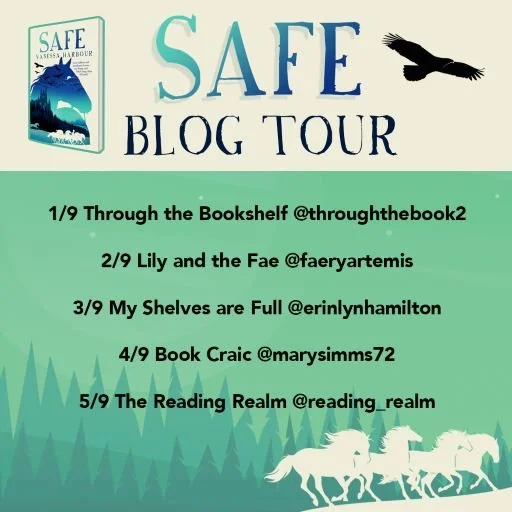Blog Tour: Safe
Today, I am thrilled to be starting the Blog Tour for this wonderful book. ‘Flight’, the first book in which we meet Kizzy and Jakob, is a stunning story which I highly recommend and so I was delighted to learn that ‘Safe’ was to be the sequel.
This guest post from Vanessa offers a fascinating insight into her writing, showing how she adds such life and texture to her work.
When writing a novel you have to have credible characters and a viable plot which all has to happen within a believable setting. Obviously, when writing historical fiction you have to get the details of the setting right within the appropriate period. You have to watch for anachronisms. No microwaves or mobile phones in your story is an extreme way to prove a point in the instance of Safe.
With both Flight and Safe, nature has been an important element. Whether it is the trees, flowers, or the birds and animals surrounding them. This is because in both stories they spend a lot of time living outside so are aware of them. I also wanted to remind children of nature. To make them think about trees and the world beyond the screen I suppose.
But setting is so much more than geography, flora and fauna. Setting encompasses where they live, what they might eat, how they get about, how they communicate and with Safe details of the war – guns, transport, uniform. This then takes us back to research. We must do enough research to get the details right but not overwhelm the narrative. The story must always wear the research with a light hand.
When creating setting the ideal is to visit the place you are situating your story in. Sometimes this is not always feasible. For me, for example, as a disabled author, this is not always that simple and I confess it is where I love Google maps and the facility where you can ‘walk’ around to see what is there. Allowing me the freedom to ‘visit’ a place. Yes, it allows you to visualise it, but what it can’t do is enable you to hear the sounds or the smells in a place, which is a distinct disadvantage, particularly for me who loves to use the senses in her writing.
Smell can be very powerful and evocative. We can all think of a smell that immediately takes us back to a memory or a place. The smell of burnt toast immediately takes me back to holidays with my family on the Welsh coast when I was between 2 and 3. Very happy times. Using all these senses in your writing can lift the narrative and just add that depth. However, as with everything, there is a fine line between adding the perfect detail and overwhelming the reader with too much detail. It’s a cliché, but something that I stand by – less is more.
When you are writing a scene that is emotionally wrought and powerful, I have a habit of doing lots of research and writing it ‘big’ first. This might mean I will write a whole chapter based on the scene away from the manuscript so that I can get all that research in – doing everything that I have said above that you shouldn’t do. Once I have done that and got the emotion in there that I want. I will distil it down and down, by rewriting it, shorter and shorter, until it ends up at the length I want it to be in the actual manuscript. It will have all the emotion and power that I wanted because it has been informed by the work I did beforehand. I did this in Flight with the mass grave scene and also in Safe with the death of Anna’s parents and brother.
Getting the setting right is important because if you get that wrong the reader may lose faith in your story and put it down, wondering what else in the story is inaccurate. I’ve seen that with my grandson, who stopped reading a book when he found an issue with a historical book he was reading. It put him off. When I am researching my settings, I will create a document where I list all the websites and books that I use so I know if there is a query during the editorial process I can check it quickly.
Like research, the setting is something that I love to create and understand. It is one of the main foundation stones of your story and you need to be aware of it so that your readers can get the most out of your story.
Vanessa Harbour
Social Media:
Instagram @NessHarbour
Twitter @VanessaHarbour
Many thanks to Vanessa for sharing this with me today- and thanks to Amy at Firefly Press for inviting me to take part. I will be posting my review of ‘Safe’ early next week with a link to my previous review of ‘Flight’, but I highly recommend them to everyone!
Make sure you follow all the stops on the Safe Blog Tour to find out more.


